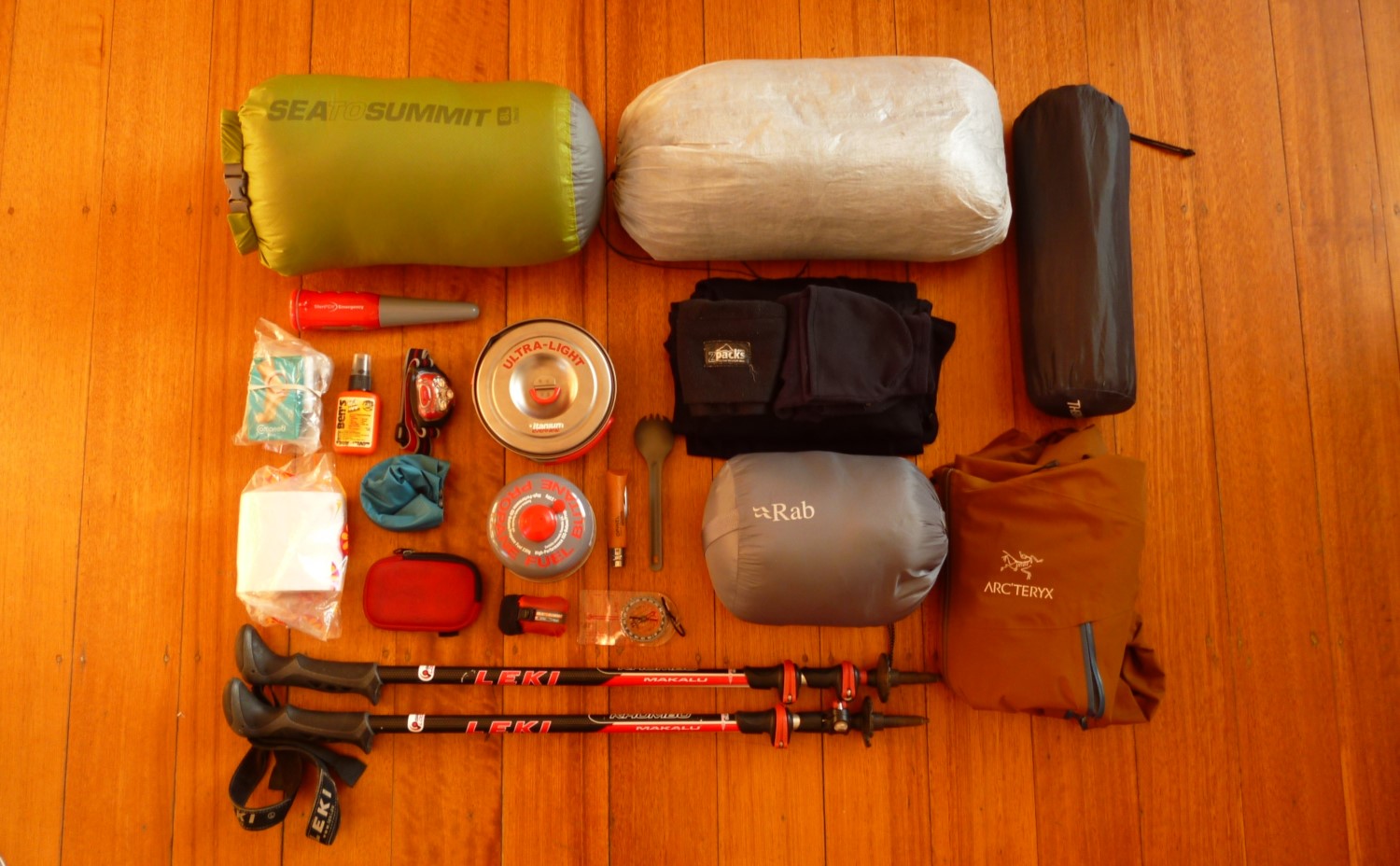Ultimate Guide to Getting Started with Ultrarunning
JUMP TO: WHAT IS ULTRARUNNING / TRAINING / GEAR / NUTRITION / RACE PREPARATION / STARTING THE JOURNEY
Author: Steve Edgerton
The appeal of ultrarunning is hard to explain. Ultrarunning is always difficult, often painful, and rarely fun in the moment. The idea of spending an entire day—or multiple days—pushing your physical limits simply defies logic.
Yet this lack of logic is, perhaps, what draws so many people to ultrarunning. It is extremely appealing because it is unexplainably hard. Running 50, 100, or 200 miles is a journey—literally, existentially, and spiritually. It is a way to test your limits, to explore beautiful places, and challenge your ideas of what is possible. If you ever need a re-dose of your faith in humanity and the human spirit, hang out at the finish line of a 100-mile race. This is life changing stuff!
Maybe you have dabbled in road marathons or enjoy long days of hiking and trail running. Maybe you are not a runner at all and are looking to take on the impossible. Wherever you are coming from, getting started with ultrarunning takes hard work, knowledge, and discipline.
Here is what you need to know to start the journey.
WHAT IS ULTRARUNNING?
The difference between ultrarunning and “normal” running is a matter of distance. Any race or run longer than the marathon (26.2 mi / 42.2 km) is unofficially within the ultra realm.
Ultrarunning can take place on the trail, road, or track. All that matters is the distance. Fifty kilometers, 50 miles, 100 kilometers, and 100 miles are popular race distances.
Time-based ultras happen on the track. Runners see how far they can run in a specified timeframe, often 12 or 24 hours. Running circles around a track for an entire day is the kind of ultrarunning that even most ultrarunners don’t quite understand.
For many, testing themselves on gorgeous mountain and forest trails is the real draw of ultramarathons, to the point that the terms trail running and ultrarunning are sometimes used interchangeably. Trail races do not have to be ultramarathons and ultramarathons do not have to be on trails, but often this is the case.
Trail races do not have to be ultramarathons and ultramarathons do not have to be on trails, but often this is the case.
TRAINING FOR ULTRA DISTANCES
Going from zero to ultra takes time. Most runners train and race for years before their first ultramarathon. Running a successful ultramarathon demands, at a minimum, a full year of consistent running.
There are countless different training philosophies and programs for ultrarunning, but almost all of them share the same key principles:
CONSISTENCY: Consistent running (five or six times a week) builds your aerobic base and creates the physiological adaptations needed to run for hours on end without destroying your body.
Start slow and progress gradually: a good rule is to increase your mileage by no more than 10% every week. Without a consistent and incremental approach, you will be susceptible to injury. You need time to adapt to the stresses of running.
SLOW DOWN: A common mistake beginner runners make is to go out and redline every single run, thinking intensity equals progress. What it really equals is injury.
About 80% of your running should be easy. What feels easy is will depend on your background, but usually this will look like 30-90 minute runs in which you can comfortably carry a conversation, your breathing isn’t labored, and you should feel like you can sustain the effort level indefinitely. You will build your aerobic capacity and stay injury free, the real keys to long term progress and ultrarunning success.
GO FAST SOMETIMES: Taking it easy most of the time allows you to do your hard running really hard, maximizing the physiological benefits. Many ultrarunners have an aversion to speedwork—it kind of is the opposite of the sport’s appeal. But even just one speed workout a week delivers huge benefits: running economy improves, and your comfortable easy pace quickens.
There is no perfect speed workout. Again, consistency trumps everything, so pick a workout you enjoy at least a little bit. Learn more about some specific speed workouts for ultrarunners here.
THE LONG RUN: Marathon and half marathon runners will be familiar with the weekend long run—it is a staple of every distance running plan. Ultrarunning is the same. If you are training for shorter ultras like a 50 km (31 mile) race, progress from a 14-16 mile long run to 22-26 miles over 10-12 weeks, adding distance every two to three long runs.
If training for 50 miles or further, start incorporating back-to-back long runs. After three to four hours of running, additional physiological benefits decrease rapidly while the chance of injury increases. This means that you should not simply increase your long runs proportional to the race distance. Two long runs on consecutive days (like 22 miles on Saturday, 16 miles on Sunday) will prepare you for running on tired legs while minimizing injury risk.
PRACTICE THE DOWNHILLS: Trail ultramarathons almost always include considerable elevation changes. Going up is always hard, but it will never totally derail your race the way going down can. You need to equip your quads with the ability to withstand the endless contractions they must bear on long downhill sections. If they are not prepared, the resulting micro-tears will make even walking downhill excruciating.
Practice running confidently on the downhills in your training runs: learning to flow fast downhill without resisting will help you adapt for the rigors of race day.
Practicing the downhills is critical to any successful ultra-distance trail running plan.
WHAT GEAR DO YOU NEED FOR ULTRA RUNNING?
The beauty of running is its simplicity, which holds true even at ultra distances. Some events in exposed or remote terrain will require additional gear, but the essentials for most ultramarathons remain the same:
GOOD SHOES: Your running shoes should be high-cushioned, lightweight, and not too snug. Most importantly, they should be comfortable to minimize blister-causing hotspots. In longer ultras, having two or three pairs to switch into throughout the race is common practice.
Standout shoes geared for ultramarathons include:
HYDRATION VEST: Ultrarunners often train and race in remote landscapes, so you need to be relatively self-sufficient. Most ultrarunners use a hydration vest to carry extra layers, snacks, and enough water.
Our favorite vests for ultra training and racing include:
HEADLAMP: Ultramarathons feature early morning starts or running into the night—sometimes even both. Headlamps are required for many ultramarathons, and a good one will make an enormous difference. Look for headlamps with at least 500 lumens and always pack an extra set of batteries.
Our favorite ultrarunning headlamps include:
GPS WATCH: You can easily get by without a GPS watch, humans managed to run for centuries just fine without them. However, they can be incredibly valuable for tracking mileage, managing your effort, and navigating remote terrain. Look for watches that combine accuracy, mapping functions, and outstanding battery life.
Top choices for ultrarunners include:
RUNNING APPAREL: Wear what makes you feel comfortable and confident. Moisture-wicking, quick drying fabrics like polyester and merino wool are best. Compression tights can help minimize chafing. Anti-chafe cream helps for any other high friction points between clothing and skin.
Mountain ultramarathons will often have an extensive mandatory gear list that usually includes a waterproof rain jacket, insulating pants, satellite communicator, gloves, a hat, and minimum requirements for water and calories.
Events in exposed or remote terrain will require additional gear, but the essentials for most ultramarathons remain the same.
NUTRITION
Ultrarunning is as much about eating as it is about running. You need to fuel your body to stay moving and train your stomach to capably digest a lot of calories at the same time.
Nutrition issues are the leading cause of runners dropping out of ultramarathons. Underfueling, food intolerances, and a lack of adequate preparation can end your race early.
Ultrarunning nutrition is highly personal and inevitably requires some experimentation to discover what works best for you, but there are some key principles to follow when developing your fueling strategy:
GET ENOUGH CARBS: Carbohydrates fuel the aerobic engine and are essential for endurance events. Most “running foods” like gels, drink mixes, and bars will be high in simple carbs—or sugars—providing energy that is quickly absorbed.
The latest science suggests that 60-90 g of carbohydrates (240-360 calories per hour) is the sweet spot for ultrarunners.
TRAIN YOUR GUT: 60-90 g of carbohydrates equates to eating 3-4 energy gels or 600-800 ml of a drink mix every hour. That is a lot of fuel, and it takes time for your stomach to adjust to that kind of intake while on the move.
On your long training runs, experiment with increasing your hourly carb intake by no more than 10-15 g. Stay at that level for at least three runs before bumping it up again.
LEARN WHAT YOU LIKE: Some ultrarunners can happily eat 20 or 30 gels over the course of a long race. Some stick to sweet potatoes or candy. You need to learn what you crave and will be willing to eat after six or eight hours of running.
A perfectly optimized nutrition plan will be useless if the thought of sucking down yet another chocolate espresso energy gel makes you gag, but you’re only halfway through the race with no backup plan. Train with a variety of foods to discover what works well and to help your stomach adapt to different fuel sources.
START EATING EARLY: If you wait until you feel hungry before you begin fueling, it is already too late. Hunger is a lagging indicator of your nutrition needs and delaying caloric intake can slow down the digestive tract, resulting in nausea, vomiting, cramping, and bloating. Begin taking in calories about 30 minutes into longer training runs and races.
HAVE AN AID STATION PLAN: Ultramarathon aid stations often resemble a buffet: candy, chips, hot soup, grilled cheese sandwiches, and mashed potatoes are common favorites at longer races.
Part of the allure of ultrarunning is the unknowable: there is no way to predict what you need after 70 miles of running until you do it. Maybe that grilled cheese is just the motivation you need. But as best as you can, avoid entirely new things on race day. Try to train with the same gels, mixes, and other foods that the race will provide, or pack your own.
Either way, it helps to come into each aid station with a plan—you will save time and avoid some potential gastric distress.
STAY HYDRATED: You could dedicate an entire book to the art and science of hydrating for ultramarathons. With so many variables—weather, humidity, race distance, and individual sweat rates—there is no one-size-fits-all approach.
You can get really into the weeds here, with sweat tests and highly specific hydration strategies, but for beginners, simplicity is often better. Drink to thirst in small, consistent quantities to avoid over-hydration and consume some sodium and electrolytes through food or drink mixes to avoid symptoms of hyponatremia. Between 300-800 ml of fluids an hour is the oft-suggested range.
Energy gels are an easy way to consume a lot of calories, but you’ll need to train your gut — and even then — not every ultrarunner will be happy consuming a large number of gels! (you’ll need to learn what your body craves…)
RACE PREPARATION
Running an ultramarathon is a feat of endurance and logistics. In the weeks before the race study the course profile, aid station locations, package pickups, parking options, race start time, and cutoff times. Having the details dialed in minimizes stress and allows you to conserve mental energy for your performance.
If possible, try to round up a support crew to join you for race weekend. To outsiders, ultramarathons look like an entirely individual athletic endeavor, but they often are a team effort. Once getting into distances of 50 miles and more, many runners will recruit spouses, family members, and other running pals to crew them. A crew helps you get in and out of aid stations quickly and provides some essential emotional support during the inevitable tough moments of an ultra.
It can be a big ask, getting friends to give up their weekend to follow you around remote forests all day and often all night. Make sure that their sacrifice does not go unappreciated if you want them to show up again!
Your support crew is a vital ingredient in your recipe for a successful ultra.
STARTING THE ULTRARUNNING JOURNEY
Getting started with ultrarunning is not complicated. Just run consistently, progress slowly, and fuel your body adequately. The hard part is developing the persistence and discipline needed to train week after week—to run even on the days you don’t want to, when it would be easy to blame the rainy weather or a big work project.
To persist through the grueling training weeks and the hardest moments of an ultramarathon, spend some time defining your “why.” Why this sport? Why this particular race? Why is it important to you? Whether it is for health, for challenging your limits, or for exploring landscapes you love, deeply understanding your why provides the essential motivation needed to persist and see your journey through.
And, like any journey, the real magic of ultrarunning is in the process, not the outcome. Learn to love the process, the daily dedication to a goal you once considered impossible. Running an ultramarathon is merely the reward, getting there is the real journey. Understanding and embracing that journey, day after day, is the ultimate secret to successful ultrarunning. It is what makes this sport so deeply fulfilling and so worth the dedication.
Ready to get started?
MORE INFORMATION
Looking for more information on hiking, backpacking, or trail running? Be sure to check out some of our other tips and gear reviews:
Or check out our entire Gear Reviews Page, our Knowledge Base Articles, or Destination Guides for more outdoors related content.
Happy trails and take care out there in the wild!






















